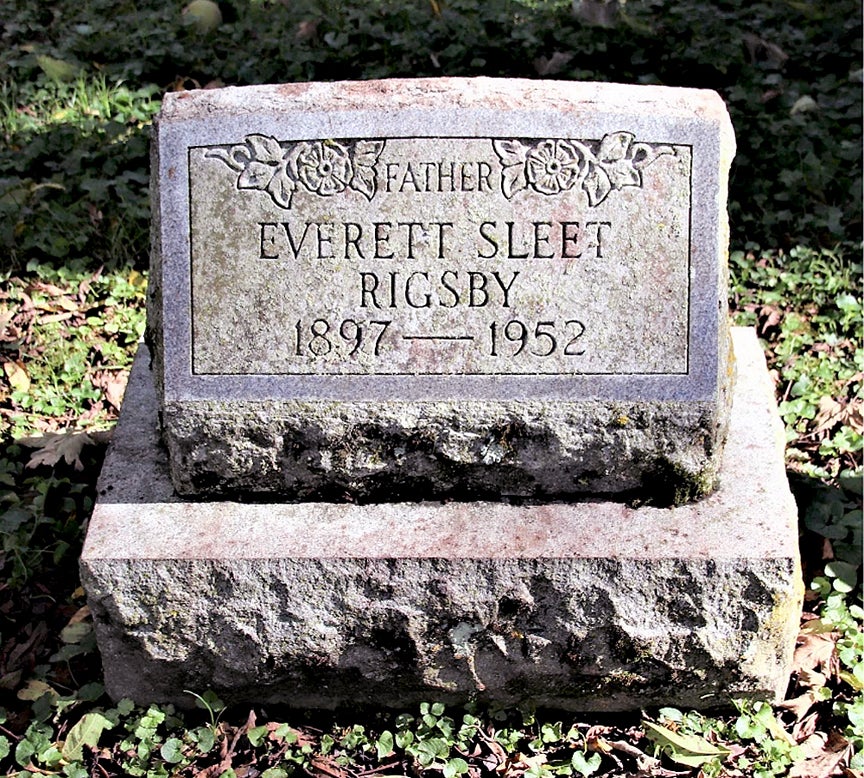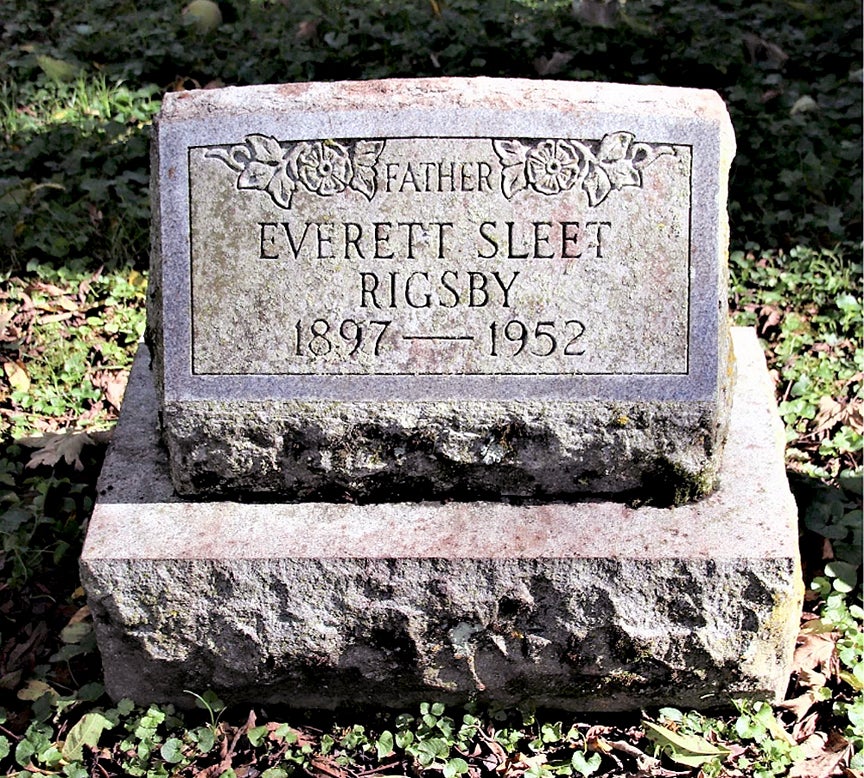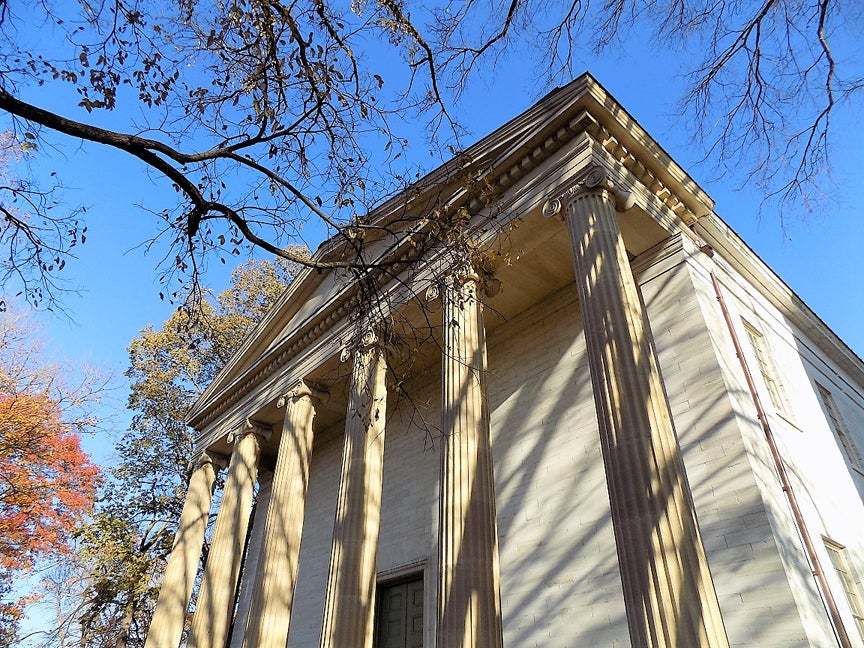Recently, I was discussing with Beth Shields, the Capital City Museum’s historian, the enigma of Everett Sleet Rigsby. Who was he? A person listening to our conversation asked, “Who was Everett Sleet Rigsby?” Now, asking someone in Frankfort who Everett Sleet Rigsby was, is the same as asking any American, “Who was Bob Ford?” or “Who was Jack McCall?”
Every American knows that Bob Ford was the dirty little coward who shot Jesse James in the back of the head as he straightened a picture hanging on the wall in his living room, just as they know that Jack McCall shot Wild Bill Hickok in the back of the head in a saloon in Deadwood, South Dakota, as he held the cards that make up the Deadman’s Hand, two aces and three eights.
Thus, I find it hard to believe that there is someone in Frankfort who does not know who Everett Sleet Rigsby was. If you do not know the answer to who Everett Sleet Rigsby was, the answer is, Everett Sleet Rigsby was the man who shot and killed John Richard Fallis during the course of a crap game being played in a Frankfort residence located at the corner of Gashouse Alley and Clinton Street. Gashouse Alley ran between Clinton and Mero streets and was located midway between Wilkinson and Washington streets.
John Fallis was born in 1879. He was the political boss of The Craw, which was the area between the Kentucky River and Ann Street that lay north of Broadway. He was a gambler, bootlegger, womanizer and enforcer. A number of men fell from bullets fired from his pistol. He was also generous with his money and always ready to help a neighbor in need. He was awarded the title “King of the Craw” by those living in that section of Frankfort.
During his time in Frankfort, Fallis was involved in a number of killings and shootouts, not only with citizens, but also with law enforcement officers. When he went to trial for one of these shootings, the jury always seemed to find a reason to reduce the charge or find him not guilty.
Everett Sleet Rigsby was born on Oct. 4, 1897, in Woodford County to William A. and Elizabeth Courtney Rigsby. At an unknown date, he married his wife, Sarah Martha Carter Rigsby, and they had six children. She divorced him in 1944. He died on Feb. 20, 1952, in Solano County, California, and is buried in the Lexington Cemetery. During the 1920s and 1930s, Rigsby seems to have drifted into illegal activities.
The story of the Rigsby-Fallis shooting is simple and yet complicated. On Sunday morning Aug. 18, 1929, Rigsby and Fallis were among those participating in a crap game in a house on Clinton Street. According to newspaper accounts, Rigsby had recently come to Frankfort from Lexington to open an insurance agency. At approximately 2 a.m. that Sunday morning, Rigsby, after losing a roll of the dice, accused Fallis of using loaded dice. An argument broke out and Rigsby, “beating Fallis to a draw,” fired six shots from his gun, of which five hit Fallis killing him. Rigsby claimed that due to his quick action with his gun, Fallis was unable to shoot back at him.
After the shooting, Rigsby left the gambling house and walked over to Broadway where he surrendered to Patrol Officer Richard Glass. Rigsby was taken by Glass to the Frankfort jail. The next day jailer Steve Toppass set up “an improvised reception room for the prisoner — where rarely fewer than half a dozen visitors sat about the room chatting with Rigsby.”
Rigsby claimed that Fallis pulled a gun first, but was later challenged in court, as no gun was found on Fallis when the police arrived at the scene of the shooting. Rigsby, at his trial, however, claimed that friends of Fallis removed the gun before the police arrived to frame him for murder. Fallis, at the time of his death, was out of jail on a $5,000 bond for being involved in a shoot-out with Frankfort Police Officer Richard Olan, during which a bystander, Lewis Brightwell, had been shot by Fallis and killed. Previous to this shooting, in 1925 Fallis had shot and wounded three Frankfort police officers.
Rigsby, upon being arrested by Frankfort Patrolman Richard Glass, was charged with the murder of John Fallis. However, on Sept. 3, 1929, the Franklin County Grand Jury, with County Judge James Polsgrove presiding, reduced the charge from murder to involuntary manslaughter. Hired to represent Rigsby in court was Frankfort attorney Polk Smith.

On Sept.28, 1929, the Franklin County Circuit Court jury, after listening to various witnesses — Rigsby claimed self-defense while others at the shooting scene claimed Fallis was unarmed — adjourned to the jury room to come to a verdict. It took the jury 25 minutes to find Everett Rigsby innocent.
The truth of the matter of the Rigsby-Fallis shooting will never be known. Many have claimed that Rigsby was a hired gun paid to kill Fallis as juries never seemed to convict Fallis.
Was the killing of Fallis an act of vigilante justice or had Fallis outlived his usefulness to organized crime or was there another motive for the shooting?
On Jan. 12, 1930, Everett Rigsby was again in trouble with Kentucky’s justice system. On that day, he got into a gun fight in Lexington with James West during an altercation in “Chicago Bottoms.” Rigsby received three shots to the body while West died from two. The gun used in the shooting was the same gun Rigsby had used to kill John Fallis.
The Lexington newspapers reported that Rigsby had cut a notch into the gun’s butt to commemorate his killing of Farris. For the killing of James West, Rigsby was sentenced to eight years in jail. Released on parole in 1934, he was soon back in jail for parole violations dealing in narcotics. Newspapers contain no further information on Rigsby except that he spent his last five years in California.
There has been some discussion of erecting a historical marker in River View Park to commemorate The Craw and John Fallis. The Capital City Museum would be interested in your thoughts on such a historical marker.










